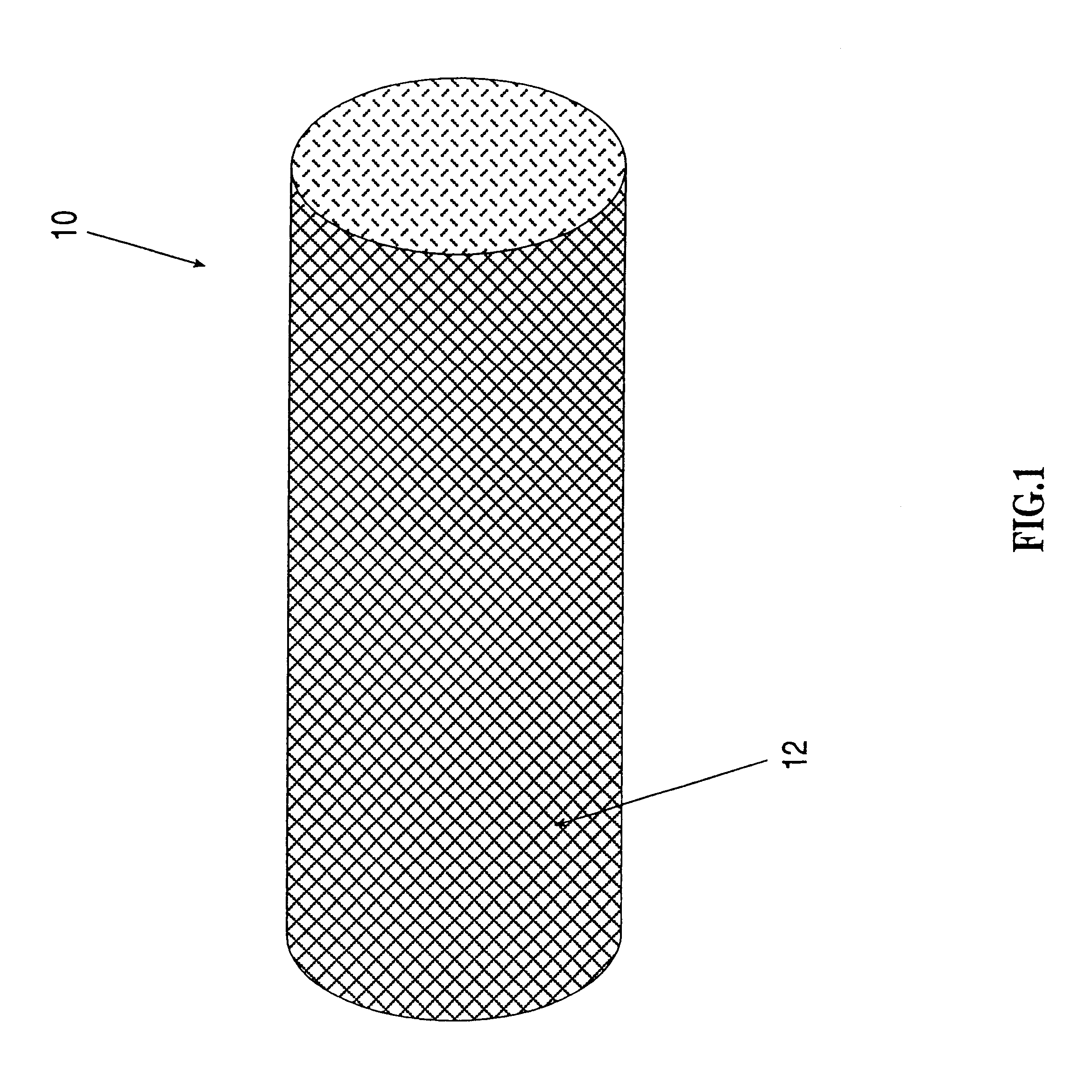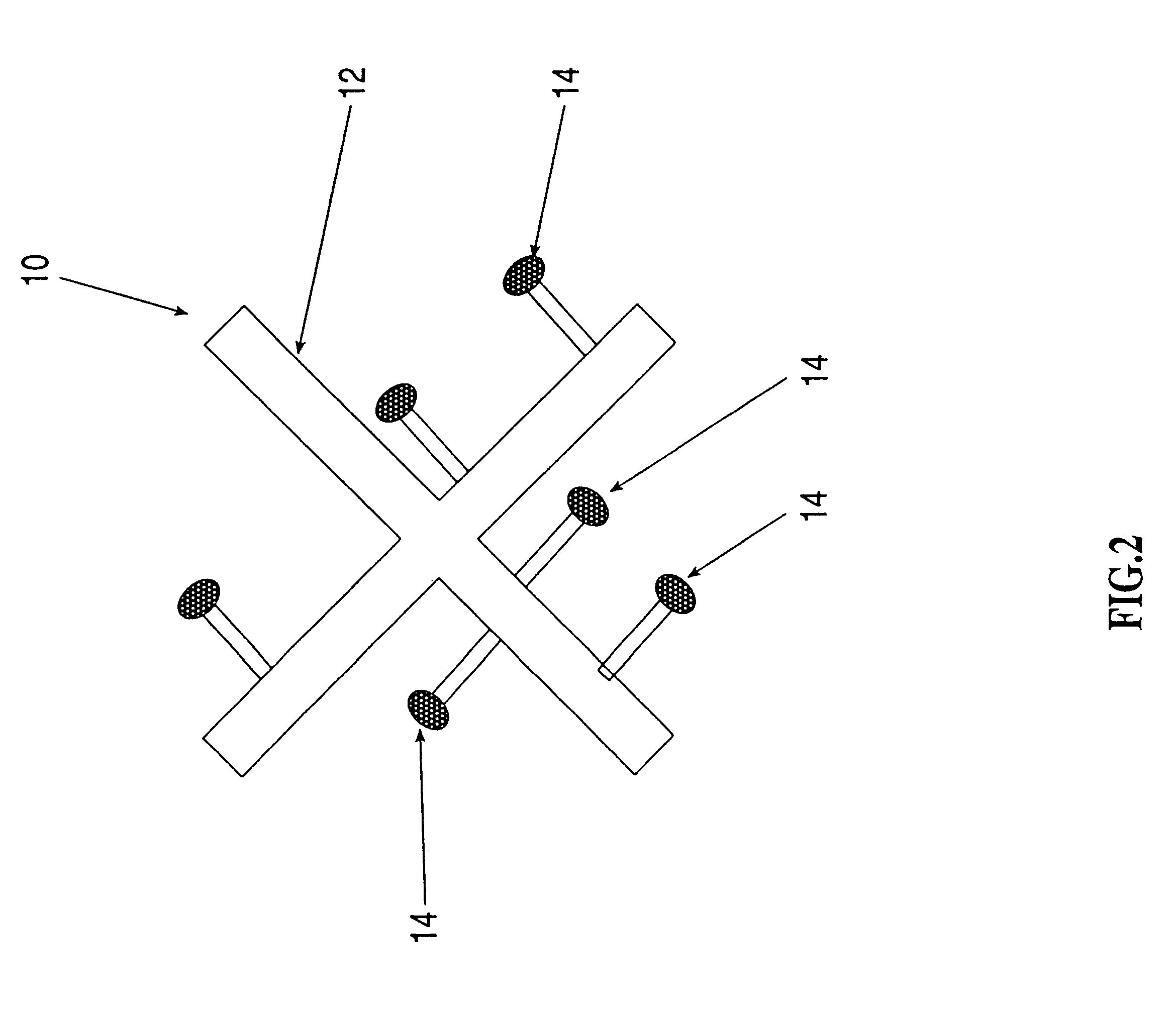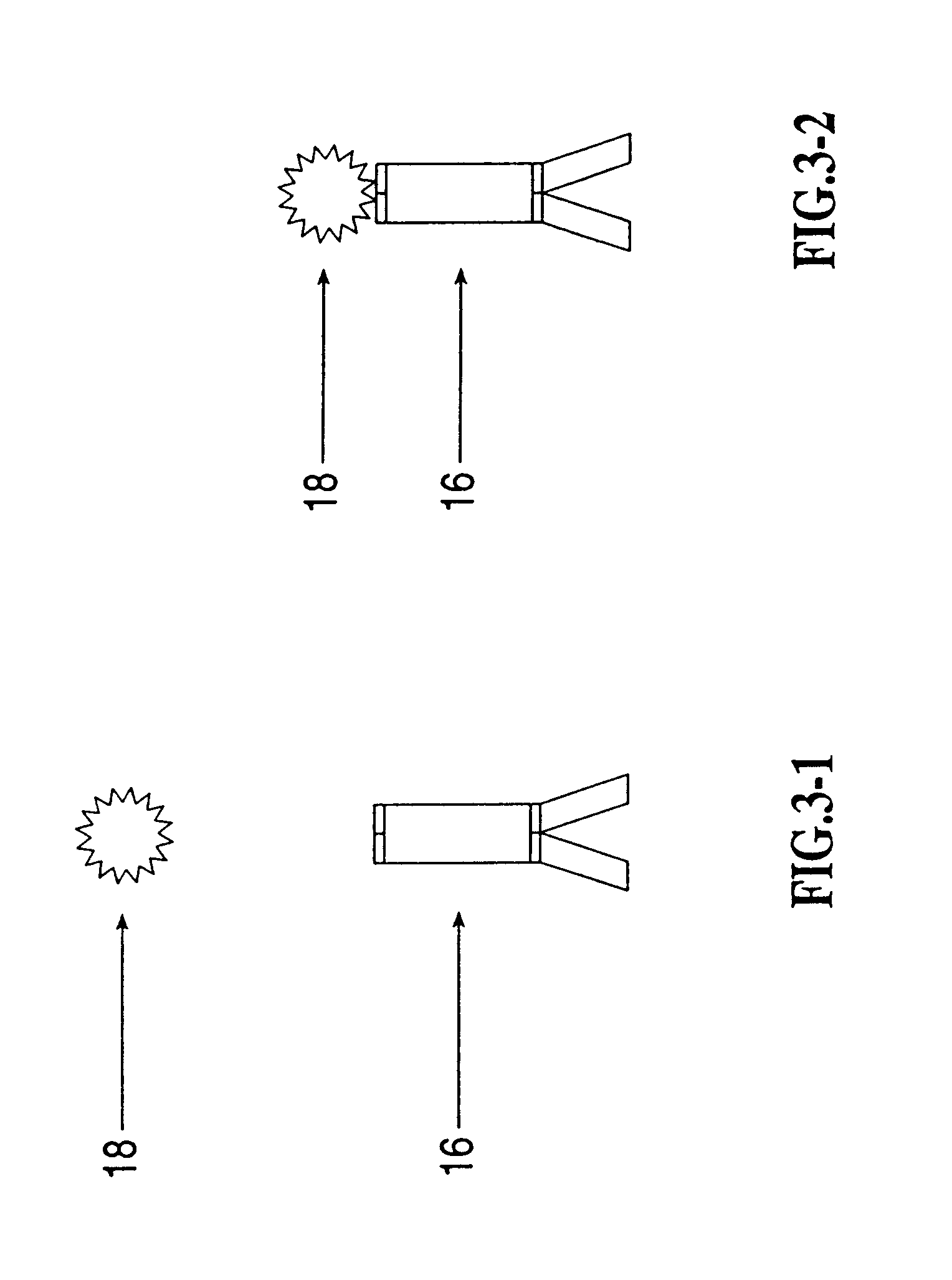Targeted therapy to a biomedical device
a biomedical device and targeted therapy technology, applied in the direction of prosthesis, drug composition, peptides, etc., can solve the problems of accelerating hyperplasia, stents alone cannot prevent restenosis, and restenosis can significantly reduce the efficacy of angioplasty
- Summary
- Abstract
- Description
- Claims
- Application Information
AI Technical Summary
Problems solved by technology
Method used
Image
Examples
example 2
Non-regular Protein Antibody / Antigen Combinations
The term "non-regular protein antibody / antigen combination" is used herein to describe a combination of a protein having antibody-like properties with an antigen, proteinaceous or otherwise. The protein with antibody-like properties is specifically not an immunoglobin such as an IgG, or a fragment of an immunoglobin such as SFv (single chain antigen binding protein), Fab.sup.1 or Fab.sup.2. Examples of proteins with antibody-like properties include avidin or biotin, a macromolecule of an IgG and a bifunctional antibody, although of course many other examples of such proteins are possible. A suitable effector could be selected from those described in any of the Examples or the "Brief Description of the Invention", for example.
FIG. 5 is an illustration of a biomedical device after administration of a key / effector combination to a subject, in which the key and lock are avidin and biotin. A biomedical device 20, here a stent for the purpo...
example 3
Non-protein Antibod / Antigen Combinations
The term "non-protein antibody / antigen combination" is used herein to describe a combination of a non-proteinaceous molecule with antibody-like properties and an antigen, proteinaceous or otherwise. Examples of the non-proteinaceous molecule include, but are not limited to, a carbohydrate macromolecule, a bifuinctional chelator and an oligonucleotide. The carbohydrate macromolecule could be specifically synthesized to be able to bind to the antigen, which could be another carbohydrate. A suitable effector could be selected from those described in any of the Examples or the "Brief Description of the Invention", for example.
FIG. 8 is an illustration of an exemplary biomedical device after administration of a key / effector combination to a subject, in which the key and lock are both non-proteinaceous carbohydrate molecules. Similar to Examples 1 and 2 above, a biomedical device 42 would have a lock 44 attached. Lock 44 could be any type of carbohy...
example 4
Mixed Lock and Key system
A mixed lock and key system according to the present invention combines various features of the locks and keys of the previous Examples in order to exploit their desirable properties. Such combinations could include both proteinaceous and non-proteinaceous molecules, or various combinations of each type of molecule. In particular, the mixed lock and key system of the present invention could include an oligonucleotide as at least a component of the key, and an antisense oligonucleotide as at least a component of the lock (Bos, E. S. et al., Cancer Res., 54:3479-86, 1994). The key oligonucleotide would be complementary to the lock oligonucleotide, and would therefore bind specifically to the lock oligonucleotide. Preferably, any type of large macromolecule which could present the oligonucleotide could be attached to the oligonucleotide of the key or of the lock. As part of the lock, such a large macromolecule could enable the oligonucleotide to be attached to ...
PUM
| Property | Measurement | Unit |
|---|---|---|
| adhesion | aaaaa | aaaaa |
| radioactivity | aaaaa | aaaaa |
| radioactive | aaaaa | aaaaa |
Abstract
Description
Claims
Application Information
 Login to View More
Login to View More - R&D
- Intellectual Property
- Life Sciences
- Materials
- Tech Scout
- Unparalleled Data Quality
- Higher Quality Content
- 60% Fewer Hallucinations
Browse by: Latest US Patents, China's latest patents, Technical Efficacy Thesaurus, Application Domain, Technology Topic, Popular Technical Reports.
© 2025 PatSnap. All rights reserved.Legal|Privacy policy|Modern Slavery Act Transparency Statement|Sitemap|About US| Contact US: help@patsnap.com



